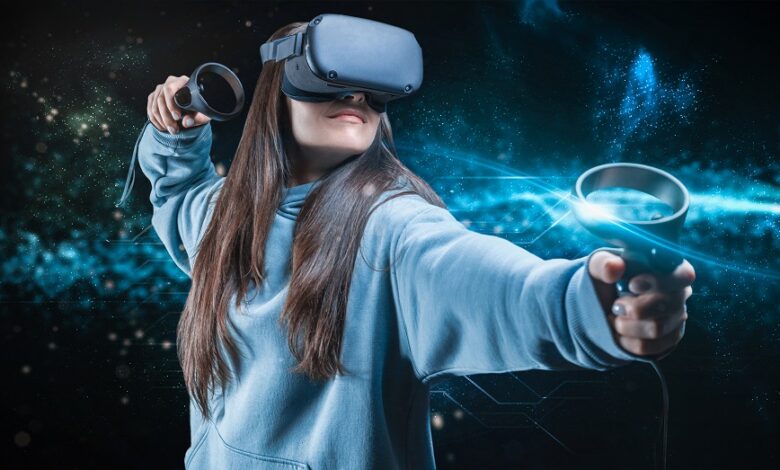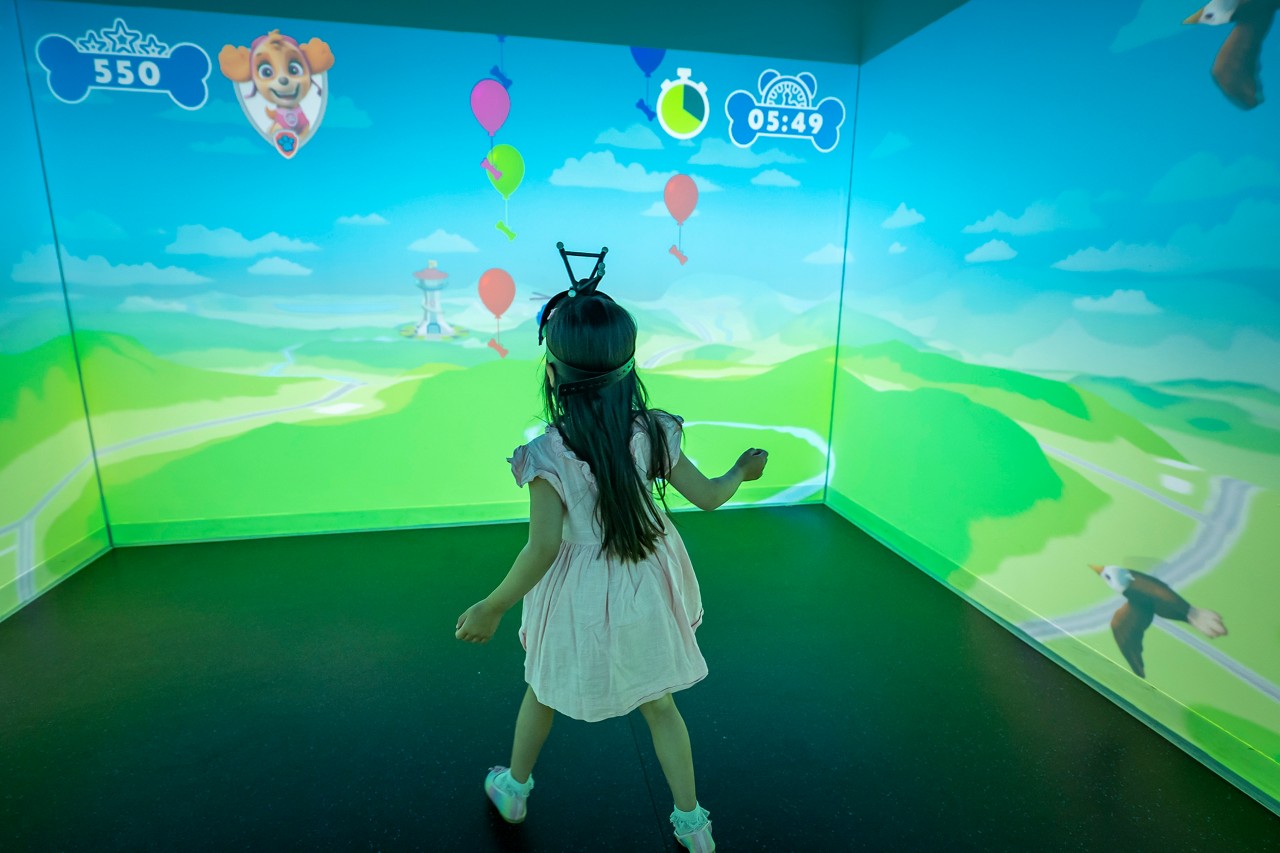The Immersive Gaming Revolution Pushes Creativity

The world of video games is no longer confined to a flat screen. The era of passive entertainment is over, replaced by a new reality where players are active participants, fully immersed in the digital worlds they inhabit. This revolution is driven by immersive gaming technology, a powerful convergence of virtual reality (VR), augmented reality (AR), haptic feedback, and advanced audio systems. These technologies are not just making games more realistic; they are fundamentally changing how we play, connect, and experience entertainment. This article will take a deep dive into the core components of the immersive gaming revolution, exploring the groundbreaking technologies powering this shift, the game-changing applications that are pushing the boundaries of creativity, and the significant challenges that still need to be addressed to achieve a truly seamless, mainstream experience.
VR, AR, and the Metaverse

At the heart of the immersive gaming revolution is a fundamental change in how we perceive and interact with digital worlds. VR and AR are the primary drivers of this shift, offering two distinct but complementary paths to immersion.
A. The World of Virtual Reality (VR)
Virtual Reality is a technology that completely immerses a player in a simulated digital environment. A VR headset blocks out the physical world and replaces it with a virtual one, giving the player a sense of presence and a new way to explore and interact with a game.
- High-Fidelity Visuals: The latest VR headsets feature high-resolution displays and a wider field of view, making the virtual world feel more real and reducing the “screen-door effect” that plagued earlier devices. The visuals are so realistic that they can trick the brain into believing it is in a different place.
- Full-Body Tracking: Advanced VR systems now use a combination of external sensors and on-board cameras to track a player’s full-body movements. This allows for a new level of physical interaction, where a player can physically dodge an attack, run in place to move their avatar, or use their hands to manipulate a virtual object with precision.
- The Rise of Standalone Headsets: The introduction of standalone VR headsets has been a game-changer for mainstream adoption. These devices, which contain all the necessary computing power and tracking systems, have eliminated the need for a high-end PC and complex external sensors, dramatically reducing the cost and friction of getting into VR.
B. The Power of Augmented Reality (AR)
While VR immerses you in a virtual world, Augmented Reality overlays digital information onto the physical world. This is a powerful and more accessible form of immersive technology, as it doesn’t require a player to block out the physical world.
- Ubiquitous Mobile AR: The smartphone is the primary entry point for AR experiences. Games like Pokémon Go have shown the power of AR to turn a physical location into a digital playground. The ubiquity of smartphones means that billions of people already have access to a basic form of AR.
- The Promise of AR Glasses: The long-term vision for AR is a pair of sleek, stylish glasses that can display everything from a game map to a virtual enemy directly in your field of view. These glasses will blur the lines between the digital and physical worlds, turning the entire planet into a potential gaming arena.
The Full-Body Experience
Immersion is more than just visuals; it’s about engaging all the senses. The immersive gaming revolution is leveraging advanced haptic feedback, spatial audio, and even scent technology to create a more holistic experience.
A. Haptic Feedback
The new generation of haptic devices is providing a new level of physical feedback that connects a player to the game world.
- Full-Body Suits: A full-body haptic suit can provide a wide range of sensations, from the jolt of an explosion to the gentle touch of a virtual character. This physical feedback adds a new dimension of realism and emotional connection to the game.
- Haptic Gloves: Haptic gloves can allow a player to feel the texture of a virtual object, from the roughness of a stone to the smoothness of a polished surface. This is a game-changer for interactions with the virtual world.
- Haptic Controllers: The new controllers in gaming consoles and VR systems use sophisticated motors and actuators to provide a wide range of vibrations and sensations. A player can feel the rumble of a car engine or the tension of a bowstring, creating a new layer of tactile feedback.
B. The Power of Immersive Audio
Audio is a key component of immersion. The new era of gaming is defined by spatial audio systems that can create a realistic, three-dimensional soundscape.
- 3D Audio: A player can now tell the exact direction and distance of a sound in a game, from the footsteps of a monster behind them to the sound of a bird in a tree far away. This is a critical component for both immersion and gameplay, as it can be used to provide a tactical advantage in a game.
- Personalized Soundscapes: Advanced audio systems can now use AI to create a personalized soundscape that is tailored to a player’s individual hearing, making the game more accessible and immersive for everyone.
C. The Olfactory Dimension
While still a nascent technology, the use of scent is the next frontier of immersive gaming. Companies are developing devices that can release a variety of scents into the air, from the smell of a forest after a rainstorm to the scent of a fresh-baked pie in a virtual kitchen. This adds a new and powerful layer of realism and memory to a game.
The Impact on Game Development and Beyond

The immersive gaming revolution is not just a technological shift; it is a fundamental change in how games are made and how they will be used in the future
A. The New Canvas for Creativity
Immersive technologies are providing game developers with a new canvas for creativity. They can now tell stories and create experiences that are simply impossible in a traditional medium. The combination of VR, haptics, and spatial audio allows developers to create a game that is as much a psychological experience as it is a visual one.
B. The Future of E-Sports
E-sports is already a massive industry, but the future of e-sports will be an immersive one. VR and AR will allow spectators to get a front-row seat to the action, with the ability to walk through a stadium and watch a game from any angle. This will create a new and more engaging experience for both players and spectators.
C. A Revolution in Work, Education, and Health
The technologies that are driving the immersive gaming revolution are already being used in other industries.
- Education: Students can take a virtual field trip to ancient Rome or explore the human body at a cellular level, making learning more immersive and engaging.
- Work and Training: Surgeons can practice complex procedures on a virtual patient, and factory workers can learn to operate new equipment in a safe, risk-free environment.
- Health and Wellness: VR is being used to help patients with chronic pain, anxiety, and PTSD. It can provide a sense of escape and a new way to engage with a therapeutic process.
Conclusion
The immersive gaming revolution is a testament to the power of a holistic and multi-sensory approach to entertainment. It is a fusion of cutting-edge technologies that are fundamentally changing our relationship with digital worlds. The evolution of VR and AR hardware is dismantling the barriers to entry, making these technologies more accessible and mainstream than ever before. The power of haptic feedback is adding a new layer of physical connection, making us not just spectators but active participants. The use of spatial audio is creating a more realistic and believable soundscape, and the nascent use of scent is promising a future where our digital experiences are indistinguishable from our physical ones.
However, as we embrace this new era, we must also confront the significant challenges that lie ahead. The high cost of some of the more advanced hardware and the need for a stable, high-speed internet connection could create a new digital divide. The lack of a clear regulatory framework for data privacy and security in these immersive worlds is a serious concern that must be addressed proactively. The future of gaming is not just about a single console or a single technology; it is about a new kind of entertainment that is as immersive and personal as it is social and connected. The immersive gaming revolution is here, and it promises to create a future where our digital worlds are as real and as rich as the one we inhabit.









